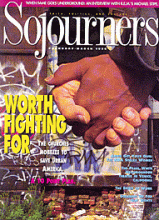When 20-year-old Irma suspected she was pregnant, she went to her friends at the Pearl White Theater of Performing Arts for advice. Once her suspicions were confirmed and she was subsequently kicked out of her mother's home, she went back to the theater to obtain information about the kinds of social services available to her. Together Irma - who is unmarried and unemployed - and the theater's co-director, Melvyn Hayward Sr., filled out a crush of paperwork so Irma could obtain AFDC monies, medical coverage, and food stamps. Now Irma is getting the kind of assistance she needs.
Such is a day in the life of the Pearl White Theater in Venice, California, a place where art and social consciousness come together. But this isn't the Venice of trendy shops, art galleries, and body builders. This is the "other" Venice, a federally subsidized housing neighborhood of 9,200 residents that's patrolled by a special police task force of 27 officers and a private security company.
This Venice struggles to retain its black identity in the face of what many residents believe is a conspiracy among police, whites, and developers to drive them out. This Venice struggles - as it has for decades - with poverty, joblessness, drug addiction, and broken families.
It's called Oakwood, a community one square mile wide of poor African Americans, Latinos, and a growing white population that's smack in the center of Venice - just a few blocks from the Pacific Ocean where single-family dwellings start at $300,000. Oakwood is so mean that grammar-school kids have their own gang, the Tiny Insane Crips, and preteens sell crack on the street day and night. Local police records indicate there are more than 250 identified gang members in Oakwood alone. Drug arrests there run about 30 a month. In this Venice, success is measured by surviving, staying out of jail, and holding a job.
Read the Full Article
